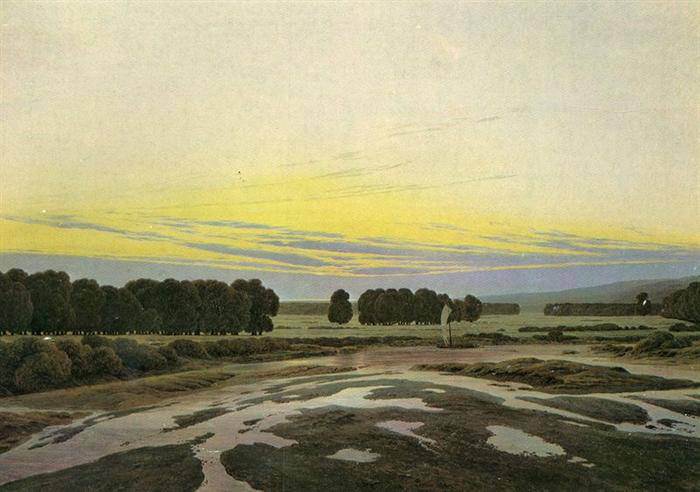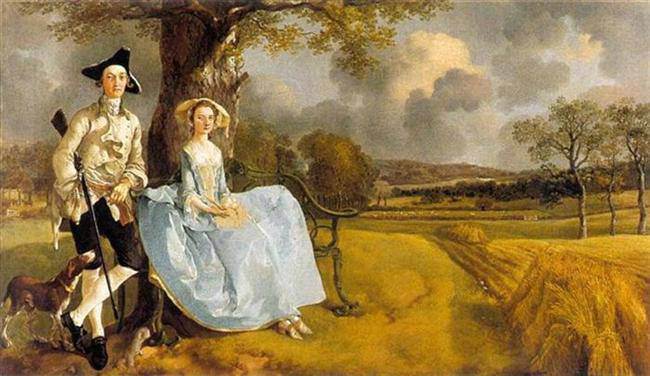Caspar David Friedrich · The Great Preserve (The Ostra Preserve)

Caspar David Friedrich (German, 1774-1840), ca.1832, oil on canvas, 73,5×102,5 cm. (28.9 × 40.4 in). Dresden, Gemäldegalerie
“I must stay alone and know that I am alone to contemplate and feel nature in full”
Caspar David Friedrich
Caspar David Friedrich is the great figure of German Romantic painting, heir to a long tradition of landscape painters initiated by Altdorfer and Dürer. His works, mostly forgotten after his death, were rediscovered in the late 19th century and much appreciated by the 20th century avant-garde. After the Second World War, his fame was largely obscured, as many critics misunderstood Friedrich’s landscapes as having a nationalistic aspect. Today, his works are considered the quintessence of romantic landscape.
The Ostra Preserve was a wetland located on the banks of the Elbe River, in the northwest of Dresden. In “The Great Preserve” Friedrich has chosen a rather strange point of view, located unusually high over the wetlands. In addition, the curvatures of both the banks of the river and the clouds make it look like the canvas is either seen through a convex glass or placed on a cylindrical surface.
Friedrich, the “taciturn man from the North”, as he was sometimes called, suffered several depressive episodes and at least one suicide attempt. The sense of loneliness is constant in his works, reflecting the isolation he suffered in life. Nothing in this painting shows any trace of human life, except for a small boat that seems to have been trapped forever in the melancholic waters of the great preserve.
G. Fernández – theartwolf.com
Follow us on:


